|
News Archive: Nov. 1-30 |

|
Station reboost, circuit breaker glitches assessed
Space station engineers believe a Russian rocket firing to boost the lab's altitude, needed to permit the shuttle Discovery to dock on flight day three of its upcoming mission, was aborted Wednesday because of the station's unbalanced mass.
 FULL STORY FULL STORY
 |  |

|
 |
Primordial organic matter found in meteorite
NASA researchers at Johnson Space Center, Houston have found organic materials that formed in the most distant reaches of the early Solar System preserved in a unique meteorite. The study was performed on the Tagish Lake carbonaceous chondrite, a rare type of meteorite that is rich in organic (carbon-bearing) compounds.
 FULL STORY FULL STORY
 |  |

|
 |
Early orbit support critical to GPS satellite missions
How does a Global Positioning System satellite make it from the ground into a 12,000-mile orbit? The Cape is in charge of the first 68 minutes of the trip; after that, the reins are handed to the 1st Space Operations Squadron at Schriever Air Force Base, Colorado.
 FULL STORY FULL STORY
 |  |
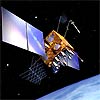
|
 |
Successful firing of Vega's first-stage motor in Kourou
The P80 motor, which will power the first stage of ESA's Vega launch vehicle, was ignited for its first static firing test at the Guiana Space Centre in Kourou on Thursday.
 FULL STORY FULL STORY
 |  |

|
 |
Shuttle launch set for next Thursday, pending issues
NASA managers Wednesday wrapped up a two-day flight readiness review and officially set Dec. 7 as the target launch date for the shuttle Discovery on an unprecedented mission to rewire the international space station. But station engineers are working two issues that must be resolved for Discovery to get off the ground next week.
 FULL STORY FULL STORY
 COUNTDOWN TIMELINE COUNTDOWN TIMELINE
 LAUNCH TRAJECTORY DATA LAUNCH TRAJECTORY DATA
 KEY MISSION PERSONNEL KEY MISSION PERSONNEL
 CREW BACKGROUND CREW BACKGROUND
 |  |

|
 |

Additional coverage for subscribers:
 VIDEO:
WEDNESDAY'S SHUTTLE BRIEFING IN ITS ENTIRETY PLAY VIDEO:
WEDNESDAY'S SHUTTLE BRIEFING IN ITS ENTIRETY PLAY

BRIEFING SOUNDBITES:
 VIDEO:
THE ISSUES DISCUSSED AT FRR PLAY VIDEO:
THE ISSUES DISCUSSED AT FRR PLAY
 VIDEO:
NOT YOUR FATHER'S FRR PLAY VIDEO:
NOT YOUR FATHER'S FRR PLAY
 VIDEO:
READY TO RESUME NIGHT LAUNCHES PLAY VIDEO:
READY TO RESUME NIGHT LAUNCHES PLAY
 VIDEO:
LAUNCH PREPS PROCEEDING WELL PLAY VIDEO:
LAUNCH PREPS PROCEEDING WELL PLAY
 VIDEO:
YEAR-END ROLLOVER CONCERNS PLAY VIDEO:
YEAR-END ROLLOVER CONCERNS PLAY
 VIDEO:
REASSESSING TANK FOAM RISK PLAY VIDEO:
REASSESSING TANK FOAM RISK PLAY
 VIDEO:
STATION SOLAR ARRAY DRIVE SYSTEM PROBLEM PLAY VIDEO:
STATION SOLAR ARRAY DRIVE SYSTEM PROBLEM PLAY
 VIDEO:
PRESSURIZATION PRECAUTIONS AT THE PAD PLAY VIDEO:
PRESSURIZATION PRECAUTIONS AT THE PAD PLAY
 SUBSCRIBE NOW SUBSCRIBE NOW

|
New Mars images starting to flood over the Internet
The team that operates the high-resolution camera on NASA's Mars Reconnaissance Orbiter is releasing the first of what will be a non-stop flood of incredibly detailed Mars images taken during the spacecraft's two-year primary science mission. The new images include views of the Opportunity rover's landing site.
 FULL STORY FULL STORY
 |  |

|
 |
Study finds that a single impact killed the dinosaurs
The dinosaurs, along with the majority of all other animal species on Earth, went extinct approximately 65 million years ago. Some scientists have said that the impact of a large meteorite in the Yucatan Peninsula, in what is today Mexico, caused the mass extinction, while others argue that there must have been additional meteorite impacts or other stresses around the same time.
 FULL STORY FULL STORY
 |  |

|
 |
NEWSWIRE Links to news across the internet
|
 |
Astronomers discuss possible moon return -- (AP) The moon has very little atmosphere, and lots of dust. Those are some of the things being considered this week at the home of the Hubble Space Telescope, where astronomers are discussing the opportunities offered by NASA's plan to return to the moon, including the possibility of a telescope on the lunar surface.

China's landmark broadcast satellite fails -- (AP) A satellite, aiming to provide a television signal to every household in China, has encountered problems with its solar panels and will not function as planned. China's first direct broadcasting satellite, the Sinosat II, launched on October 29 from southwest China's Sichuan province, failed to deploy a solar panel and an antenna and is unable to undertake its broadcast functions, the China News Service said Tuesday.

After historic shot in space, Russian thanks Martino and Mann -- (PGA.com) Russian Cosmonaut Mikhail Tyurin was late to his tee time in space, but he didn't forget to thank his coaches after he had launched a golf ball to kick off a six-hour spacewalk outside the International Space Station on Nov. 22.
|
 |
Newest Mars orbiter passes communications relay test
An orbiting NASA spacecraft just starting to study Mars with six science instruments has successfully tested another key part of its payload, a versatile radio for relaying communications with robots on the surface.
 FULL STORY FULL STORY
 |  |
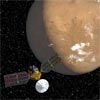
|
 |
Integral spacecraft catches a new erupting black hole
The European Space Agency's gamma-ray observatory, Integral, has spotted a rare kind of gamma-ray outburst. The vast explosion of energy allowed astronomers to pinpoint a possible black hole in our galaxy.
 FULL STORY FULL STORY
 |  |

|
 |
New Horizons probe makes its first Pluto sighting
The New Horizons team got a faint glimpse of the mission's distant, main planetary target when one of the spacecraft's telescopic cameras spotted Pluto for the first time.
 FULL STORY FULL STORY
 |  |

|
 |
Meeting to review plans for next week's shuttle launch
NASA managers are gathering at the Kennedy Space Center for a two-day flight readiness review Tuesday and Wednesday to assess the shuttle Discovery's launch processing and to set an official launch date for mission STS-116.
 FULL STORY FULL STORY
 |  |

|
 |

Additional coverage for subscribers:
 VIDEO:
NARRATED STS-116 MISSION PREVIEW MOVIE PLAY VIDEO:
NARRATED STS-116 MISSION PREVIEW MOVIE PLAY
 VIDEO:
OVERVIEW OF STS-116 MISSION PLAY VIDEO:
OVERVIEW OF STS-116 MISSION PLAY
 VIDEO:
SHUTTLE/ISS PROGRAM PERSPECTIVE PLAY VIDEO:
SHUTTLE/ISS PROGRAM PERSPECTIVE PLAY
 VIDEO:
PREVIEW OF MISSION'S SPACEWALKS PLAY VIDEO:
PREVIEW OF MISSION'S SPACEWALKS PLAY
 VIDEO:
ASTRONAUTS' PRE-FLIGHT NEWS BRIEFING PLAY VIDEO:
ASTRONAUTS' PRE-FLIGHT NEWS BRIEFING PLAY
 VIDEO:
COVERAGE OF PRACTICE COUNTDOWN ACTIVITIES PLAY VIDEO:
COVERAGE OF PRACTICE COUNTDOWN ACTIVITIES PLAY
 VIDEO:
DISCOVERY ROLLS TO THE PAD PLAY VIDEO:
DISCOVERY ROLLS TO THE PAD PLAY
 MORE: STS-116 VIDEO COVERAGE MORE: STS-116 VIDEO COVERAGE
 SUBSCRIBE NOW SUBSCRIBE NOW

|
Supercomputer studies Milky Way's dark matter
Researchers at the University of California, Santa Cruz, have used NASA's most powerful supercomputer to run the largest simulation to date of the formation and evolution of the dark matter halo that envelopes the Milky Way galaxy. Their results show substructures within the halo in unprecedented detail, providing a valuable tool for understanding the evolutionary history of our galaxy.
 FULL STORY FULL STORY
 |  |

|
 |
Saturn joins Venus in the vortex club
Cassini's spectacular image of Saturn's polar vortex, published this month by NASA, may provide astronomers with a missing piece in the puzzle of how that planet's atmosphere works. For planetary scientists studying Venus, the image was strangely familiar.
 FULL STORY FULL STORY
 |  |

|
 |
Vesper mission could explore Earth's fiery twin
Earth has a twin sister, and she's gone bad. At the dawn of the space age, scientists thought the planet Venus' cloudy atmosphere might hide a steamy jungle planet teeming with life. However, when the first American and Russian space probes visited Venus in the 1960s, it became clear that something had gone terribly wrong with the planet's ability to support life. NASA is now studying a new mission called Vesper to explore the atmosphere and how it changes.
 FULL STORY FULL STORY
 |  |

|
 |
Genesis findings solve Apollo lunar soil mystery
Ever since astronauts returned from another world, scientists have been mystified by some of the moon rocks they brought back. Now one of the mysteries has been solved.
 FULL STORY FULL STORY
 |  |
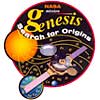
|
 |
Spacewalkers go golfing outside space station
A Russian cosmonaut wielding a gold-plated golf club hit an imitation golf ball at 7:57 p.m. EST Wednesday evening during a spacewalk aboard the international space station. It was an advertising stunt that resulted in the longest drive in golf history.
 PREVIEW STORY PREVIEW STORY
 MISSION STATUS CENTER - live updates MISSION STATUS CENTER - live updates
 |  |
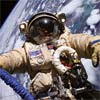
|
 |

Additional coverage for subscribers:
 VIDEO:
PREPARING A THANKSGIVING FEAST ON THE STATION PLAY VIDEO:
PREPARING A THANKSGIVING FEAST ON THE STATION PLAY

 VIDEO:
TYURIN HITS THE GOLF BALL DURING SPACEWALK PLAY VIDEO:
TYURIN HITS THE GOLF BALL DURING SPACEWALK PLAY
 VIDEO:
GOLF STUNT DESCRIBED PLAY VIDEO:
GOLF STUNT DESCRIBED PLAY
 VIDEO:
COSMONAUT PRACTICES GOLF SWING PLAY VIDEO:
COSMONAUT PRACTICES GOLF SWING PLAY
 VIDEO:
SPACEWALK PREVIEW BRIEFING Part 1 | Part 2 VIDEO:
SPACEWALK PREVIEW BRIEFING Part 1 | Part 2
 SUBSCRIBE NOW SUBSCRIBE NOW

|
Hope fades for missing Mars Global Surveyor craft
Mars Global Surveyor, the oldest of four spacecraft currently in orbit around the red planet, apparently fell victim to what amounts to severe arthritis Nov. 2 when one of its two solar panels jammed and stopped tracking the sun. While the 10-year-old spacecraft may still be alive, hunkered down in electronic hibernation awaiting instructions from Earth, controllers haven't been able to regain contact and fear the aging satellite may be lost.
 FULL STORY FULL STORY
 NASA STATEMENT NASA STATEMENT
 EARLIER STORY EARLIER STORY
 |  |

|
 |

Additional coverage for subscribers:
 AUDIO:
TUESDAY'S MARS GLOBAL SURVEYOR NEWS BRIEFING PLAY AUDIO:
TUESDAY'S MARS GLOBAL SURVEYOR NEWS BRIEFING PLAY
 SUBSCRIBE NOW SUBSCRIBE NOW

|
Twin star explosions fascinate astronomers
Scientists using NASA's Swift satellite stumbled upon a rare sight: two supernovas side by side in one galaxy. Large galaxies typically play host to three supernovas per century. Galaxy NGC 1316 has had two supernovas in less than five months, and a total of four supernova in 26 years.
 FULL STORY FULL STORY
 |  |

|
 |
Spinning black hole pushes the speed limit
The existence of black holes is perhaps the most fascinating prediction of Einstein's Theory of General Relativity. And now, a team has measured a black hole spinning so rapidly - turning more than 950 times per second - that it pushes the predicted speed limit for rotation.
 FULL STORY FULL STORY
 |  |

|
 |
Unmanned X-37B vehicle to test reusability in space
The Air Force is working on a space vehicle that will allow government scientists to transport advanced technology into orbit, test its capability there, then bring it home to see how it fared in the harsh environment of space. The first X-37B Orbital Test Vehicle will launch from Cape Canaveral in 2008 atop a Lockheed Martin Atlas 5 rocket and land in California at either Vandenberg or Edwards.
 FULL STORY FULL STORY
 |  |

|
 |
Air Force awards EELV funding contract for Delta 4
Boeing has been given a $674 million Evolved Expendable Launch Vehicle Launch Capability contract by the Air Force to provide the infrastructure required to support four launches per year, with one of those from the West Coast.
 FULL STORY FULL STORY
 |  |
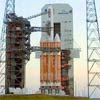
|
 |
Ulysses probe embarks on third set of polar passes
On Friday, the Ulysses solar mission reached another important milestone on its journey: the start of the third passage over the Sun's south pole. Launched in 1990, the spacecraft is engaged in the exploration of the heliosphere, the bubble in space blown out by the solar wind.
 FULL STORY FULL STORY
 |  |

|
 |
OTHER HEADLINES Additional stories today
|
 |
NASA reviews next human spacecraft system -- NASA has completed a milestone first review of all systems for the Orion spacecraft and the Ares I and Ares V rockets. The review brings the agency a step closer to launching the nation's next human space vehicle.

Team discovers exotic relatives of protons, neutrons -- A team of scientists, including four at The Johns Hopkins University, has discovered two new subatomic particles, rare but important relatives of the familiar, commonplace proton and neutron.
|
 |
Delta 2 completes another GPS satellite delivery
The 125th Boeing Delta 2 rocket blasted off from Cape Canaveral Friday afternoon on another mission to replenish the satellite constellation of the Global Positioning System.
 FULL STORY FULL STORY
 MISSION STATUS CENTER MISSION STATUS CENTER
 LAUNCH EVENTS TIMELINE LAUNCH EVENTS TIMELINE
 GROUND TRACK MAP GROUND TRACK MAP
 DELTA ARCHIVE DELTA ARCHIVE
 IMAGES: SERVICE TOWER ROLLBACK IMAGES: SERVICE TOWER ROLLBACK
 IMAGES: LAUNCH PHOTO GALLERY IMAGES: LAUNCH PHOTO GALLERY
 IMAGES: MORE LAUNCH PHOTOS IMAGES: MORE LAUNCH PHOTOS
 |  |

|
 |

Additional coverage for subscribers:
 VIDEO:
THE DELTA 2 ROCKET LIFTS OFF WITH GPS 2R-16 PLAY VIDEO:
THE DELTA 2 ROCKET LIFTS OFF WITH GPS 2R-16 PLAY
 VIDEO:
WIDE-SCREEN LAUNCH MOVIE FROM PRESS SITE PLAY VIDEO:
WIDE-SCREEN LAUNCH MOVIE FROM PRESS SITE PLAY
 VIDEO:
WEDNESDAY'S PRE-LAUNCH NEWS CONFERENCE PLAY VIDEO:
WEDNESDAY'S PRE-LAUNCH NEWS CONFERENCE PLAY
 VIDEO:
GPS SATELLITE ANIMATION PLAY VIDEO:
GPS SATELLITE ANIMATION PLAY
 VIDEO:
MOST RECENT GPS LAUNCH FROM SEPT. 25 PLAY VIDEO:
MOST RECENT GPS LAUNCH FROM SEPT. 25 PLAY
 SUBSCRIBE NOW SUBSCRIBE NOW

|
Hubble's evidence for dark energy in young universe
Scientists using NASA's Hubble Space Telescope have discovered that dark energy is not a new constituent of space, but rather has been present for most of the universe's history. Dark energy is a mysterious repulsive force that causes the universe to expand at an increasing rate.
 FULL STORY FULL STORY
 |  |
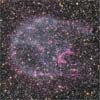
|
 |
Successful night test firing of shuttle solid motor
Thursday evening, Alliant Techsystems conducted a test firing of a space shuttle solid rocket motor. The test had numerous objectives, including to collect nighttime imagery data in support of night launches of shuttle and to assist NASA in the development of its next-generation crew launch vehicle, the Ares I.
 FULL STORY FULL STORY
 |  |

|
 |
Chandra discovers relativistic pinball machine
New clues about the origins of cosmic rays, mysterious high-energy particles that bombard the Earth, have been revealed using NASA's Chandra X-ray Observatory. An extraordinarily detailed image of the remains of an exploded star provides crucial insight into the generation of cosmic rays.
 FULL STORY FULL STORY
 |  |

|
 |
OTHER HEADLINES Additional stories today
|
 |
Astronomers confirm asteroid 'KW4' is not a threat to Earth -- The Arecibo Observatory's powerful radar - a keen eye aimed into the sky - has made the most detailed observations ever of a binary near-Earth asteroid. This information provides clues about asteroid formation, properties and motion dynamics.
|
 |
Twenty new stars in the neighborhood
Astronomers have identified 20 new stellar systems in our local solar neighborhood, including the twenty-third and twenty-fourth closest stars to the Sun. When added to eight other systems announced by this team and six by other groups since 2000, the known population of the Milky Way galaxy within 33 light-years of Earth has grown by 16 percent in just the past six years.
 FULL STORY FULL STORY
 |  |

|
 |
OTHER HEADLINES Additional stories today
|
 |
University students are helping NASA with GeneSat -- Dozens of university students are helping NASA to prepare, monitor and analyze the science from a 'nano' satellite scheduled to launch in December. The GeneSat-1 spacecraft will carry bacteria inside a miniature laboratory to study how the microbes may change genetically during spaceflight.

Multi-national agreement to advance high-speed flight -- The U.S. Air Force and Australian Department of Defence signed a multi-national research partnership in Canberra, which will explore and develop fundamental hypersonic technologies.
|
 |
Scientists find new way to search for origin of life
Scientists suspect that organic material was likely introduced to Earth from many complementary sources. Abundant biomolecules form in molecular clouds in deep space, and these extraterrestrial compounds must have rained down on the early Earth.
 FULL STORY FULL STORY
 |  |
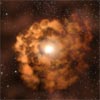
|
 |
OTHER HEADLINES Additional stories today
|
 |
TerreStar chooses Arianespace for launch -- Arianespace and TerreStar Networks, an emerging North American mobile communications operator, have signed a "Launch on Demand" contract for TerreStar I, which will be the largest commercial communications satellite ever launched into geostationary orbit.

Boeing to build 4th Wideband Gapfiller Satellite -- The Boeing Company has received a $299.8 million U.S. Air Force contract for the production of the fourth Wideband Gapfiller Satellite.

NASA Aviation Safety Reporting System turns 30 -- NASA's Aviation Safety Reporting System (ASRS) recently marked its 30-year anniversary. The confidential reporting system is widely used by pilots and other airline employees to identify potential safety hazards.
|
 |
Resplendent Rhea
Bright streaks adorn the face of densely cratered Rhea, Saturn's second largest moon, in this picture from the Cassini spacecraft. The image was taken in visible light from a distance of approximately 470,000 miles.
 FULL STORY FULL STORY
 |  |

|
 |
Golden night on Saturn
Saturn's B and C rings shine in diffuse, scattered light as the Cassini spacecraft looks on the planet's night side. The southern hemisphere is lit by sunlight reflecting off the rings, while the north shines much more feebly in the dim light that filters through the rings and is scattered on the northern hemisphere.
 FULL STORY FULL STORY
 |  |

|
 |
Moon's escaping gasses expose fresh surface
Conventional wisdom suggests that the Earth's moon has seen no widespread volcanic activity for at least the last 3 billion years. Now, a fresh look at existing data points to much more recent release of lunar gasses.
 FULL STORY FULL STORY
 |  |

|
 |
Cassini stares into the eye of monster storm on Saturn
NASA's Cassini spacecraft has seen something never before seen on another planet -- a hurricane-like storm at Saturn's South Pole with a well-developed eye, ringed by towering clouds.
 FULL STORY FULL STORY
 |  |

|
 |
Discovery moved to launch pad for upcoming blastoff
Shuttle Discovery journeyed to launch pad 39B Thursday to begin final preparations for its nighttime blastoff December 7 on a delicate space station re-wiring mission. NASA managers considered moving launch up an additional day, to Dec. 6, but ruled that out based on time needed to complete crew training and to develop software intended to prevent damage to the station's new solar arrays.
 FULL STORY FULL STORY
 EARLIER ROLLOUT STORY EARLIER ROLLOUT STORY
 IMAGES: ROLLOUT PHOTO GALLERY IMAGES: ROLLOUT PHOTO GALLERY
 |  |

|
 |

Additional coverage for subscribers:
 VIDEO:
DISCOVERY ROLLS TO THE PAD PLAY VIDEO:
DISCOVERY ROLLS TO THE PAD PLAY

 VIDEO:
DISCOVERY MATED TO TANK AND BOOSTERS PLAY VIDEO:
DISCOVERY MATED TO TANK AND BOOSTERS PLAY
 VIDEO:
SHUTTLE HOISTED VERTICALLY INSIDE VAB PLAY VIDEO:
SHUTTLE HOISTED VERTICALLY INSIDE VAB PLAY
 VIDEO:
DISCOVERY HAULED FROM HANGAR TO VAB PLAY VIDEO:
DISCOVERY HAULED FROM HANGAR TO VAB PLAY
 VIDEO:
PORT 5 TRUSS PAYLOAD PACKED UP PLAY VIDEO:
PORT 5 TRUSS PAYLOAD PACKED UP PLAY
 VIDEO:
CREW VISITS KENNEDY SPACE CENTER PLAY VIDEO:
CREW VISITS KENNEDY SPACE CENTER PLAY
 VIDEO:
EXTERNAL FUEL TANK MATED TO BOOSTERS PLAY VIDEO:
EXTERNAL FUEL TANK MATED TO BOOSTERS PLAY
 MORE: STS-116 VIDEO COVERAGE MORE: STS-116 VIDEO COVERAGE
 SUBSCRIBE NOW SUBSCRIBE NOW

|
Problems for Mars Global Surveyor orbiter
Engineers are striving to restore full communications with NASA's Mars Global Surveyor on the 10th anniversary of the spacecraft's launch. The orbiter is the oldest of five NASA spacecraft currently active at the red planet.
 FULL STORY FULL STORY
 |  |

|
 |
Proton rocket's commercial marketer begins new era
International Launch Services' first flight since its reorganization to focus exclusively on commercial Russian Proton rocket missions successfully lofted an Arab telecommunications satellite Wednesday.
 FULL STORY FULL STORY
 MISSION STATUS CENTER MISSION STATUS CENTER
 |  |

|
 |
Spitzer and Hubble create colorful masterpiece
NASA's Spitzer and Hubble Space Telescopes have teamed up to expose the chaos that baby stars are creating 1,500 light-years away in a cosmic cloud called the Orion nebula. This striking infrared and visible-light composite indicates that four monstrously massive stars at the center of the cloud may be the main culprits in the familiar Orion constellation.
 FULL STORY FULL STORY
 |  |

|
 |
Gravity helps reveal a jewel of the early universe
A team from the Sloan Digital Sky Survey and Fermi National Accelerator Laboratory has announced discovery of the brightest known image of a galaxy from the early universe. While furious star formation makes the galaxy luminous, it enters the record books because the gravity of a foreground galaxy acts as a natural telescope, focusing its light on the earth.
 FULL STORY FULL STORY
 |  |

|
 |
Early Earth's haze may have spurred life, study says
Hazy skies on early Earth could have provided a substantial source of organic material useful for emerging life on the planet, according to a new study led by the University of Colorado at Boulder. The laboratory experiment modeled conditions measured by the Huygens probe on Saturn's moon, Titan.
 FULL STORY FULL STORY
 |  |
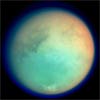
|
 |
OTHER HEADLINES Additional stories today
|
 |
Astronaut Jim Halsell retires -- Veteran astronaut Jim Halsell, a retired Air Force colonel, is leaving NASA to take a position in the aerospace industry. Selected by NASA as an astronaut in 1990, Halsell flew on five space shuttle missions, commanding three of them. He accumulated more than 1,250 hours in space.

NASA supports fire mapping efforts on California -- A team led by NASA and U.S. Forest Service scientists recently collected real-time, visible and infrared data from sensors onboard a remotely piloted aircraft over the Esperanza Fire in Southern
California.
|
 |
Monster stellar flare dwarfs all others seen
Scientists using NASA's Swift satellite have spotted a stellar flare on a nearby star so powerful that, had it been from our sun, it would have triggered a mass extinction on Earth. The flare was perhaps the most energetic magnetic stellar explosion ever detected.
 FULL STORY FULL STORY
 |  |

|
 |
Responsive space demonstrator ready to roll
Military officials are saying the December launch of a tactical satellite, dubbed TacSat-2, will serve as the predecessor for rapid satellite production, launch and operation.
 FULL STORY FULL STORY
 |  |

|
 |
Discovery prepares for rollout to launch pad
Space shuttle Discovery has been mated to its external fuel tank and twin solid rocket boosters inside Kennedy Space Center's Vehicle Assembly Building. Rollout to launch pad 39B is now scheduled to begin around midnight Thursday morning. The payload is expected to be delivered to the pad in a special canister on Tuesday. Liftoff is scheduled for December 7, but NASA is looking at the possibility of moving up the launch to December 6.
 |  |

|
 |
Military weather satellite rockets into polar orbit
A globe-spanning weather observatory successfully launched into space Saturday aboard a Boeing Delta 4 rocket, giving the U.S. military a new set of orbiting eyes to help plan air, sea and land operations around the world.
 FULL STORY FULL STORY
 MISSION STATUS CENTER MISSION STATUS CENTER
 LAUNCH EVENTS TIMELINE LAUNCH EVENTS TIMELINE
 GROUND TRACK MAP GROUND TRACK MAP
 IMAGES: LAUNCH PHOTO GALLERY IMAGES: LAUNCH PHOTO GALLERY
 IMAGES: SERVICE TOWER ROLLBACK IMAGES: SERVICE TOWER ROLLBACK
 |  |

|
 |
Giant rings discovered around galaxy cluster
Astronomers using the National Science Foundation's Very Large Array radio telescope have discovered giant, ring-like structures around a cluster of galaxies. The discovery provides tantalizing new information about how such galaxy clusters are assembled, about magnetic fields in the vast spaces between galaxy clusters, and possibly about the origin of cosmic rays.
 FULL STORY FULL STORY
 |  |

|
 |
Spitzer finds cosmic dust where never found before
The dust that condensed to form the sun, the Earth and the stuff of human bodies has long been thought to have originated in violent explosions of giant stars. But these explosions -- called supernovae -- can't account for all the dust in the cosmos.
 FULL STORY FULL STORY
 |  |

|
 |
Where galactic snakes live
This infrared image from NASA's Spitzer Space Telescope shows what astronomers are referring to as a "snake" and its surrounding stormy environment. The sinuous object is actually the core of a thick, sooty cloud large enough to swallow dozens of solar systems. In fact, astronomers say the "snake's belly" may be harboring beastly stars in the process of forming.
 FULL STORY FULL STORY
 |  |

|
 |
Deep Impact mission extension clears hurdle
A University of Maryland proposal to send the Deep Impact spacecraft on an extended mission to get a close-up look at Comet Boethin has cleared the biggest step in a two-step NASA approval process.
 FULL STORY FULL STORY
 |  |

|
 |
|
Read our earlier news archive page.
|



